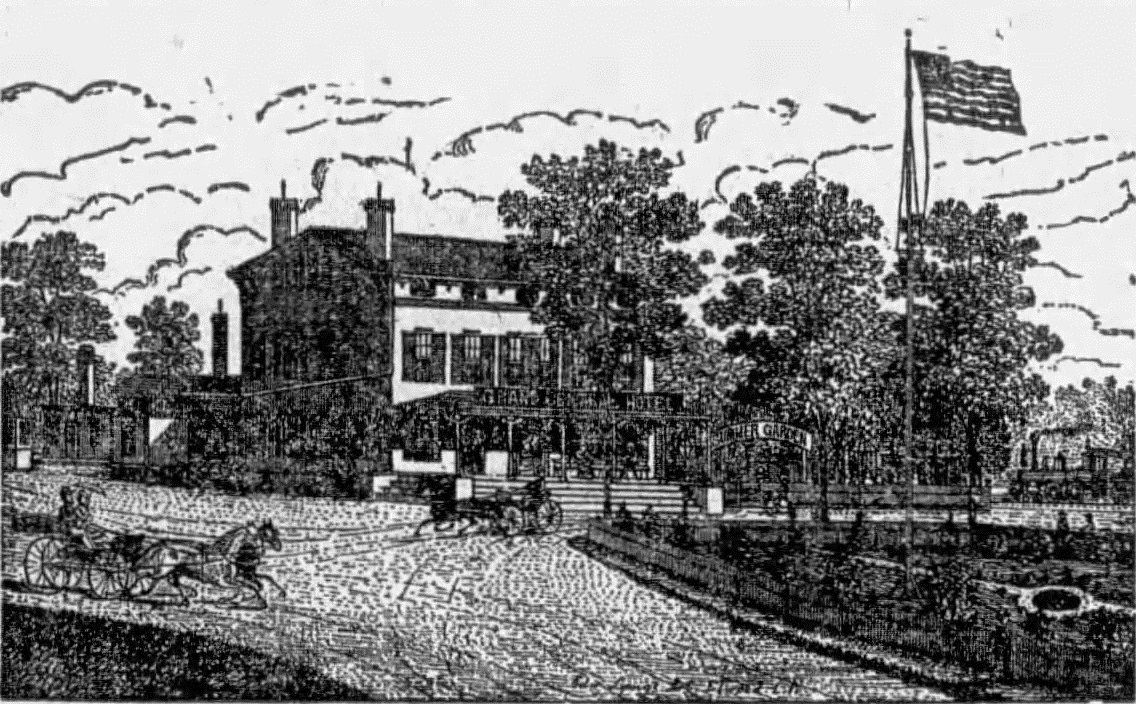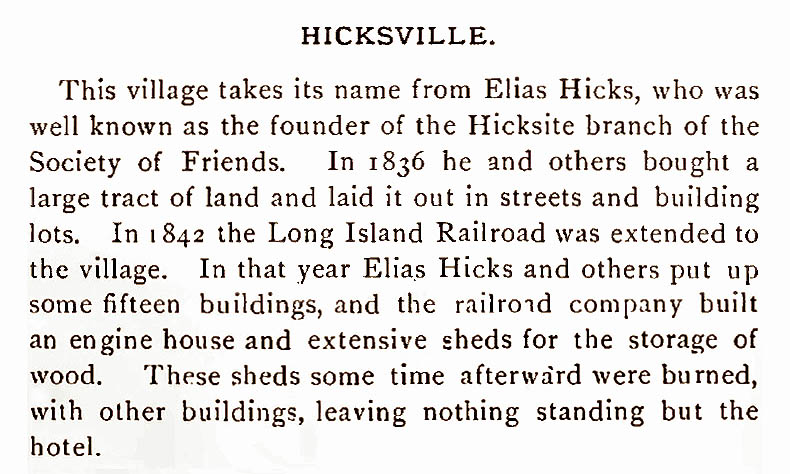The Fable Begins
In 1882, a History of Queens County, 1683-1882 was published, celebrating in more than 600 glorious pages the story of every village and town that lay between Kings and Suffolk Counties. The Chapter on Hicksville may be unique among the book’s contents, for the account of that village’s founding may be the only one in the entire book that bears almost no connection with reality:
Where to begin? This is fable, not history. In reality, the village was named after Quaker land speculator and LIRR President Valentine Hicks, not itinerant Quaker preacher Elias Hicks. The latter did NOT lay out the village’s streets in 1836, having died in 1830. The railroad reached the village-to-be in 1837, not in 1842, and although the LIRR then erected a number of railroad structures, there seems to be no evidence that Valentine Hicks and his cohorts did anything to develop the place they had named “Hicksville.” Their properties lay fallow for years, waiting for resale until the railroad had made large-scale farming in Hicksville feasible. Only then were the speculators’ properties re-sold (at significant profit) as “virgin farmland” to newcomers who would farm it hard and raise profitable crops that were shipped by train to the markets of New York. There seems to be no contemporary evidence or record of a devastating fire.
The single element of truth in the fable is that when German immigrants first arrived at the Hicksville depot, the Grand Central Hotel stood nearby, a solitary retreat built to invite city dwellers to hunt in the wild, wooded Long Island plains.
 old-time view of Grand Central Hotel reprinted in Brooklyn Daily Times for July 23, 1890
old-time view of Grand Central Hotel reprinted in Brooklyn Daily Times for July 23, 1890


